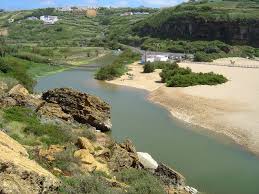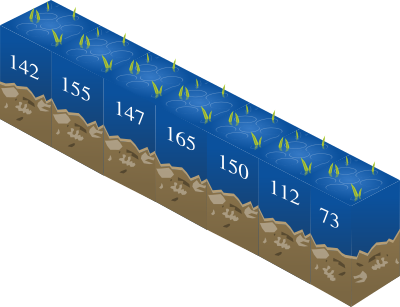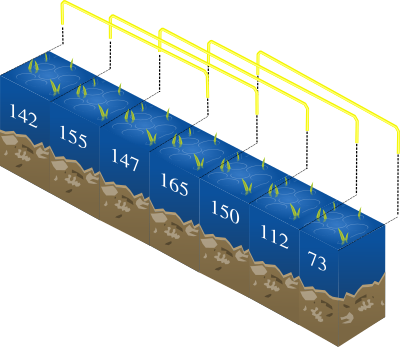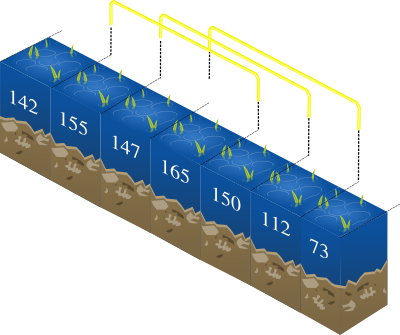In what concerns the continuous evaluation solving exercises grade during the semester, you should submit until 23:59 of October 19th
(this exercise will still be available for submission after that deadline, but without couting towards your grade)
[to understand the context of this problem, you should read the class #02 exercise sheet]
[AED003] Saving Pipefish
 The
estuarin pipefish (Syngnathus watermeyeri) is an
endangered river fish species. You work for IUCN (International
Union for Conservation of Nature) and you are in charge of
studying a section of a river where pipefish were found, so that
we can better observe its behavior.
The
estuarin pipefish (Syngnathus watermeyeri) is an
endangered river fish species. You work for IUCN (International
Union for Conservation of Nature) and you are in charge of
studying a section of a river where pipefish were found, so that
we can better observe its behavior.
The river can be thought of as a sequence of N
positions, each one indicating its depth. For instance, a river
with N = 7 positions could be the one depicted
in the following figure:

The study will take place on a contiguous section of the river
that contains exactly K consecutive positions. For
instance, if K = 3, there are 5 possible study
sections as depicted on the following figure:

Choosing the right section of K positions to study is a
delicate task, but you know that pipefish like to swim on
positions with a minimum depth of T. Therefore, a study
section is considered to be valid if at least half of its
positions have a depth bigger or equal than T. For
instance, if K = 3 and T = 150,
then there would be 3 valid sections:

Can you help IUCN compute the number of valid sections for a general case?
The Problem
Given integers N, K, T and a sequence
of N integers, your task is to compute the number of
valid sections, that is, the number of contiguous subsequences
of length K such that at least half of its elements are bigger or equal than T.
Input
The first line contains three space separated integers: N (the number of positions of the river), K (the length of the study section) and T (the minimum depth).
The second line contains N space separated integers, where the i-th integer represented the depth Ti of the i-th position.
Output
A single line containing an integer that represents the number
of contiguous subsequences of length K such that at least
half of its elements are bigger or equal than T.
Constraints
The following limits are guaranteed in all the test cases that will be given to your program:
| 1 ≤ K ≤ N ≤ 100 000 |
|
Length of the river and number of positions in the study section |
| 1 ≤ T ≤ 100 000 |
|
Minimum depth |
| 1 ≤ Ti ≤ 100 000 |
|
Depth of each position |
| Example Input 1 |
Example Output 1 |
7 3 150
142 155 147 165 150 112 73
|
3
|
| Example Input 2 |
Example Output 2 |
12 4 10
5 10 12 10 9 14 5 7 9 11 3 3
|
4
|
The first example of input corresponds to the figures above.
(this is an adaptation from a problem of the National Olympiads in Informatics)
Algorithms and Data Structures (L.EIC011) 2024/2025
DCC/FCUP & DEI/FEUP - University of Porto
 The
estuarin pipefish (Syngnathus watermeyeri) is an
endangered river fish species. You work for IUCN (International
Union for Conservation of Nature) and you are in charge of
studying a section of a river where pipefish were found, so that
we can better observe its behavior.
The
estuarin pipefish (Syngnathus watermeyeri) is an
endangered river fish species. You work for IUCN (International
Union for Conservation of Nature) and you are in charge of
studying a section of a river where pipefish were found, so that
we can better observe its behavior.

